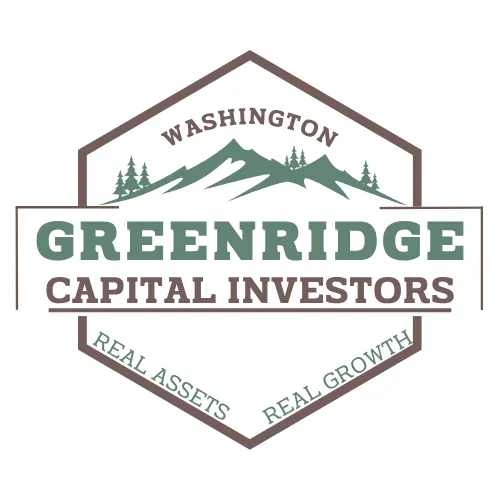FAQs
Answers to the most common questions we hear from investors.
Question 1: What is the difference between 506(b) and 506(c) offering?
Both are offerings under SEC Regulation D, but they differ primarily in who can invest and how the opportunity can be marketed:
506(b) Offering:
Allows participation from both *accredited investors** and up to 35 sophisticated non-accredited investors.
* Public advertising is not permitted—investors must have a pre-existing relationship with us before being invited.
506(c) Offering:
Open *only to accredited investors**.
* Public advertising and marketing are allowed.
* Accredited status must be verified by a third party (such as a CPA, attorney, or verification service), rather than self-certified.
Question 2: How do I know if I am an Accredited Investor?
According to the SEC, you qualify as an Accredited Investor if you meet any of the following criteria:
* Net Worth: Your net worth (excluding your primary residence) exceeds $1 million, individually or jointly with a spouse or spousal equivalent.
* Income: You’ve earned at least $200,000 annually (or $300,000 jointly with a spouse) for the past two years and expect to maintain that level.
* Professional Credentials: You hold certain financial licenses, such as Series 7, 65, or 82.
* Entity Role: You serve as a general partner, executive officer, or director of the company issuing the securities.
Question 3: What does it mean to be a sophisticated investor?
A Sophisticated Investor is someone who may not meet the formal criteria of an Accredited Investor but has sufficient financial or business experience to evaluate the risks and potential rewards of an investment opportunity.
Question 4: Do I have to be an Accredited Investor to invest?
No. Our investment opportunities are available to accredited and sophisticated investors. To explore current offerings, simply register to gain access.
Question 5: What is the minimum investment amount?
The minimum investment amount varies by opportunity, but most offerings start at $50,000. Contact us to learn about our current projects and available investment options.
Question 6: What kind of returns can I expect?
Returns in real estate syndications vary based on the property, market conditions, and execution of the business plan. Generally, investors earn returns in two ways:
1. Cash flow during the hold period from rental income after expenses and reserves
2. Profit at sale or refinance from appreciation and equity growth
At Greenridge Capital Investors, we typically target an IRR of 15% or higher for our investors. These are projections, not guarantees—every investment carries risk, and actual results may differ.
Our focus is on conservative underwriting and disciplined risk management to deliver strong performance while safeguarding investor capital.
Question 7: How long will my money be invested?
Multifamily syndications are typically medium- to long-term investments, with hold periods ranging from 3 to 7 years, depending on the property and business plan. During this time, your capital remains invested until the asset is sold or refinanced.
Some projects may generate cash flow along the way, but the timing and amount of distributions will vary based on property performance and are not guaranteed.
Question 8: How involved will I need to be as an investor?
Multifamily syndication is a truly hands-off investment. Once you invest, our team manages everything—from renovations and property operations to financial reporting and distributions. You’ll receive regular updates on performance and returns, but you can enjoy the benefits without any day-to-day management responsibilities.
Question 9: What types of accounts can I invest through?
You can invest using a variety of account types, including:
Individual accounts
Joint accounts
Tenancy in common
Entity accounts such as Trusts, LLCs, LPs, C Corps, or S Corps
Retirement accounts like Self-Directed IRAs and 401(k)s
This flexibility allows you to choose the structure that best aligns with your financial goals and tax strategy.
Question 10: Can I use my IRA or 401(k) to invest?
Yes! Many investors use Self-Directed IRAs (SDIRAs) or Solo 401(k)s to invest in multifamily syndications. These accounts let you diversify into real estate while keeping your retirement funds tax-advantaged.
Here’s how it works:
1. Set up a Self-Directed IRA or Solo 401(k) with a qualified custodian or administrator.
2. Use those funds to invest directly in our opportunities.
3. All returns—cash flow and profits—go back into your retirement account, growing tax-deferred (Traditional) or tax-free (Roth), depending on your plan.
It’s a smart way to grow your retirement portfolio beyond the stock market. If you don’t yet have a custodian, we can connect you with one we trust.
Question 11: What is a K-1?
When you invest in a real estate syndication, you become a member of the LLC that owns the property. Each year, you’ll receive a Schedule K-1 tax form detailing your share of the partnership’s income, losses, deductions, and credits.
Key things to know about K-1s:
* The LLC doesn’t pay federal or state income tax directly—profits and losses “pass through” to investors.
* Your K-1 reflects your portion of those results, which you report on your personal tax return.
* K-1s are typically issued each March, giving you time to prepare for tax season.
In short, your K-1 is the document that reports how your investment performed for tax purposes.
Question 12: How frequently are distributions made?
Distributions are reviewed quarterly and typically issued about 45 days after the close of each quarter. Once finalized, investors are notified with full details and payout timing.
In some projects—particularly value-add or renovation-focused deals—early cash flow may be reinvested into improvements and stabilization. This may delay initial distributions, but it’s a strategic approach to strengthen the asset, protect investor capital, and maximize long-term returns.
Question 13: When can I expect my first distribution?
The timing of your first distribution depends on the property and its business plan. For stabilized assets, distributions typically begin after the first full quarter of operations (about 3–4 months post-closing).
For value-add or renovation projects, early cash flow is often reinvested into improvements, so distributions may start later once the property reaches steady income.
We’ll always outline the expected timeline upfront and keep you updated on progress throughout the investment.
Question 14: What exactly are the funds used for?
Investor funds are used to acquire and operate the property. This includes the down payment, acquisition and legal fees, transaction costs, planned renovations, and reserves to ensure strong ongoing performance.
Question 15: How is this different from investing in single-family rentals?
Multifamily syndication lets you scale faster and benefit from economies of scale. Instead of managing one rental at a time, you’re investing in larger apartment communities run by professional management teams. It also spreads out your risk—when one tenant moves out, the impact is minimal compared to a single-family rental where one vacancy means no income.
Question 16: What are the tax benefits of investing in multifamily syndications?
One of the major advantages of multifamily syndication is its powerful tax benefits. Investors can often deduct depreciation, interest expenses, and other costs—helping to reduce taxable income. Through cost segregation, we can also accelerate depreciation to further enhance these savings. As always, it’s best to consult your tax advisor to understand how these benefits apply to your individual situation.
Question 17: What if I want to exit before the investment term ends?
While syndications are designed as long-term investments, some deals may allow for an early exit—though it’s never guaranteed. Unlike stocks, these investments aren’t easily liquidated, but we aim to provide flexibility when possible. In certain cases, we can facilitate a buyout or bring in another investor to assume your position.
Question 18: Can I visit the properties we invest in?
Absolutely! Investors are always welcome to visit our properties—both before investing and throughout the project’s lifecycle. If you’d like to see where your capital is at work, we’ll gladly arrange a tour and have someone on-site to walk you through and answer any questions.
Question 19: How do I get started?
Getting started is easy!
We’ll begin with a quick call to discuss your goals and how multifamily syndication can help you reach them. From there, we’ll walk you through upcoming opportunities and answer any questions so you can invest with confidence.

Growth
Building lasting wealth.

Trust
Honesty and transparency.

Legacy
Impact that lasts for generations.

FOLLOW US
COMPANY
CUSTOMER CARE
LEGAL
Copyright 2025. Greenridge Capital Investors. All Rights Reserved.
